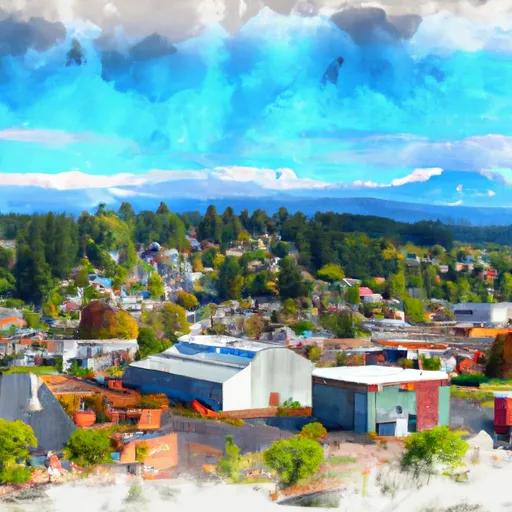-
 Snoflo Premium
Snoflo Premium
Get unlimited access to all our content
With no Ad interruptions! - Start Your Free Trial Login with existing account
Ronald
Eden Index
Climate
6.5
•
Recreation
4.7
•
Community
•
Safeguard
4.2/10

Ronald, Washington is a small town located in Kittitas County, in the central part of the state. It experiences a semi-arid climate characterized by warm summers and cold winters. Summers in Ronald are generally dry with average temperatures in the mid-80s°F (around 29°C), while winters are cold with temperatures dropping below freezing, often accompanied by snowfall.
The hydrology of Ronald is primarily influenced by the nearby Yakima River and its tributaries. These waterways provide essential resources for irrigation, fishing, and recreational activities. The Yakima River is known for its trout and salmon populations, attracting anglers from near and far.
Outdoor recreation opportunities abound in and around Ronald. The nearby Wenatchee National Forest offers hiking trails, camping sites, and scenic viewpoints. The Cle Elum Lake, situated just east of Ronald, is perfect for boating, fishing, and swimming during the warmer months. Additionally, winter enthusiasts can enjoy skiing, snowboarding, and snowmobiling in the nearby Snoqualmie Pass area.
In summary, Ronald, Washington presents a semi-arid climate, with warm summers and cold winters. Its hydrology is influenced by the Yakima River and its tributaries, providing opportunities for fishing and other water-based activities. The town is surrounded by a picturesque natural landscape, offering various outdoor recreation options throughout the year.
What is the Eden Index?
The Snoflo Eden Index serves as a comprehensive rating system for regions, evaluating their desirability through a holistic assessment of climate health, outdoor recreation opportunities, and natural disaster risk, acknowledging the profound impact of these factors on livability and well-being.
Climate Health Indicator (CHI): 6.5
Ronald receives approximately
1534mm of rain per year,
with humidity levels near 72%
and air temperatures averaging around
5°C.
Ronald has a plant hardyness factor of
6, meaning
plants and agriculture in this region thrive during a short period during spring and early summer. Most
plants will die off during the colder winter months.
By considering the ideal temperature range, reliable water supplies, clean air, and stable seasonal rain or snowpacks, the Climate Health Indicator (CHI) underscores the significance of a healthy climate as the foundation for quality living.
A healthy climate is paramount for ensuring a high quality of life and livability in a region, fostering both physical well-being and environmental harmony. This can be characterized by ideal temperatures, reliable access to water supplies, clean air, and consistent seasonal rain or snowpacks.
Weather Forecast
Streamflow Conditions
Yakima
Area Rivers
Yakima
Snowpack Depths
Yakima
Reservoir Storage Capacity
Yakima
Groundwater Levels
Recreational Opportunity Index (ROI): 4.7
The Recreational Opportunity Index (ROI) recognizes the value of outdoor recreational options, such as parks, hiking trails, camping sites, and fishing spots, while acknowledging that climate plays a pivotal role in ensuring the comfort and consistency of these experiences.
Access to outdoor recreational opportunities, encompassing activities such as parks, hiking, camping, and fishing, is crucial for overall well-being, and the climate plays a pivotal role in enabling and enhancing these experiences, ensuring that individuals can engage in nature-based activities comfortably and consistently.
Camping Areas
| Campground | Campsites | Reservations | Toilets | Showers | Elevation |
|---|---|---|---|---|---|
| Chatter Creek | 24 | 2,733 ft | |||
| Cle Elum River | 25 | 2,255 ft | |||
| Beverly | 10 | 3,116 ft | |||
| Ida Creek | 10 | 2,523 ft | |||
| Salmon La Sac | 185 | 2,391 ft | |||
| Trout Lake Creek | None | 4,845 ft | |||
| Indian Camp- State Forest | 6 | 2,574 ft | |||
| Kachess | 220 | 2,283 ft | |||
| Johnny Creek | 74 | 2,439 ft | |||
| Rock Island | 24 | 2,796 ft |
Nearby Ski Areas
Catastrophe Safeguard Index (CSI):
The Catastrophe Safeguard Index (CSI) recognizes that natural disaster risk, encompassing floods, fires, hurricanes, and tornadoes, can drastically affect safety and the overall appeal of an area.
The level of natural disaster risk in a region significantly affects safety and the overall livability, with climate change amplifying these risks by potentially increasing the frequency and intensity of events like floods, fires, hurricanes, and tornadoes, thereby posing substantial challenges to community resilience and well-being.
Community Resilience Indicator (CRI):
The Community Resilience Indicator (CRI) recognizes that education, healthcare, and socioeconomics are crucial to the well-being of a region. The CRI acknowledges the profound impact of these elements on residents' overall quality of life. By evaluating educational resources, healthcare accessibility, and economic inclusivity, the index captures the essential aspects that contribute to a thriving community, fostering resident satisfaction, equity, and social cohesion.

